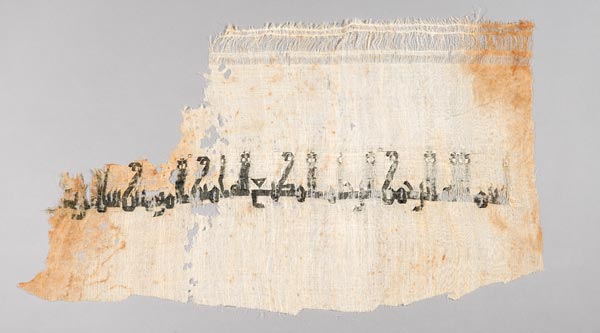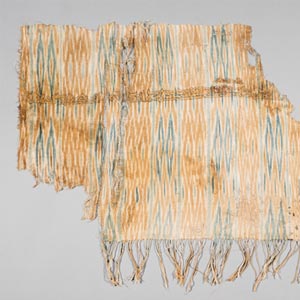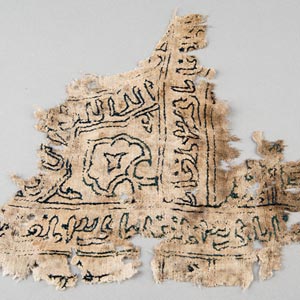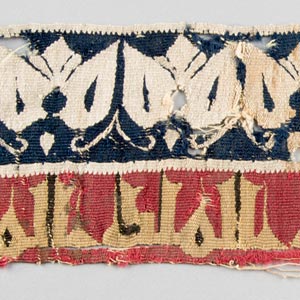Tiraz Textile Fragment
The Show

Tiraz textile fragment 10th century, Egypt Undyed linen and dyed silk Kelsey Museum of Archaeology, 22520
Although derived from the Persian word for embroidery, the word tiraz indicates an inscription band. While this tiraz fragment is in fact a textile, the silk text is woven rather than embroidered onto the undyed linen ground cloth. The bold design of deep blue on pale linen is typical of tiraz textiles produced during the 10th century in Egypt. This example in particular includes an inscription dedicated to al-Muti‘ lillah, placing its manufacture around 946–966. In later centuries, inscriptions on textiles became increasingly less legible and at times quite stylized. While tiraz textiles were not the only type of patterned fabrics produced in medieval Egypt, their survival rate is largely due to their use in funerary contexts. Archaeological excavations of the late 19th and early 20th centuries uncovered many tiraz textiles that were used as burial shrouds. It was believed that certain words and phrases could protect and transmit blessings (baraka) to the deceased individual.
Bibliography: Day 1937, 435, 441, fig. 20; Golombek 1988; Contadini 1998, 39–58; Baker 1995, 53–61; Marzouk 1943; Micklewright 1991; Sokoly 1997a; 1997b; Blair 1998, 164–181; and Ettinghausen 1974.
Return to the Show



